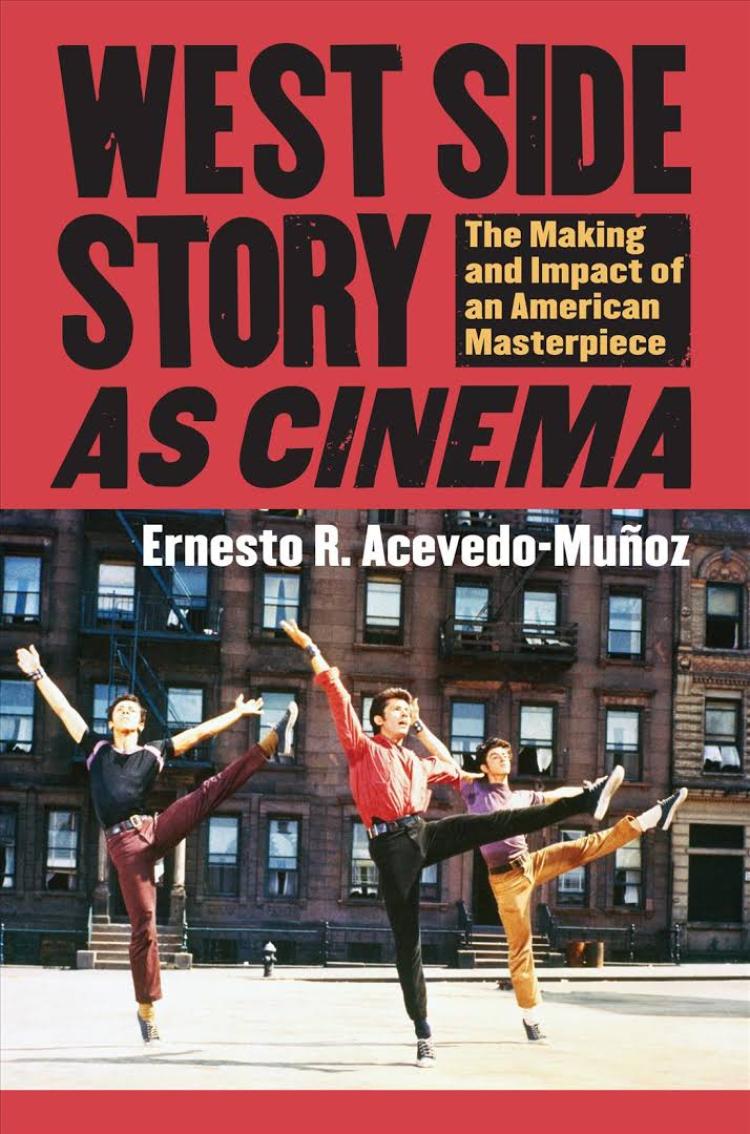Jets vs. Sharks rumble into the 21st century
Puerto Rican native Ernesto R. Acevedo-Muñoz has his eyes set on the next era of West Side Story

Ernesto R. Acevedo-Muñoz, professor and chair of Cinema Studies and Moving Image Arts
Leonard Bernstein and Stephen Sondheim’s classic musical West Side Story has played a pivotal role in the life of Ernesto R. Acevedo-Muñoz, professor and chair of Cinema Studies and Moving Image Arts at the University of Colorado Boulder, ever since his father introduced it to his children.
“My brother and I played (the album) over and over, and by the time we finally saw the movie on a pan-and-scan Betamax videotape sometime in the early 1980s, we were both sold on it,” Acevedo-Muñoz writes in his 2013 book, West Side Story as Cinema: The Making and Impact of an American Masterpiece.
“First, I was intrigued by the words, ‘Puerto Rico … my heart’s devotion’ on the album, for I had rarely heard the name of my homeland mentioned in any movie. Later, I was overwhelmed and giddily proud to see ‘Puerto Ricans’ represented onscreen, however inaccurate or stylized the portrayal.”
Acevedo-Muñoz even says the Oscar-winning 1961 film version of “West Side Story”—a retelling of Shakespeare’s tragedy, Romeo and Juliet, set in 1950s New York and replacing Capulets and Montagues with Jets and Sharks—is the reason he went into film study.

Ernesto R. Acevedo-Muñoz book "West Side Story as Cinema"
“Years ahead of its time, unlike any other musical film, West Side Story continues to explore ethnic, sexual and social anxieties and to underscore dystopian polyrhythms within a fantastically utopian genre,” he writes.
These days, many of Acevedo-Muñoz’ introductory students have never seen the film, though many know it through the television show Glee, which featured the musical in 2011.
Which isn’t to say that West Side Story has become a relic. The show has been revived on Broadway several times, most recently in 2009. Perhaps more significant, says Acevedo-Muñoz, “it has been produced thousands and thousands of times by regional, high-school and amateur companies. West Side Story has never disappeared.”
This year, the beloved—and to some, controversial—classic is set for two major revivals, with a new and radically different stage version now in previews on Broadway and a Steven Spielberg-helmed remake of the film set for release in December.
“This is not quite the same as the little summer-stock theater company doing it out in Horseballs, Nebraska,” says Acevedo-Muñoz, who is widely considered one of the nation’s experts on the film and has recently been interviewed on public radio about the coming revival and remake.
That new versions arrive at this particular point in American history is no accident, he says.
“I think it’s a direct consequence of current political tensions having to do specifically with immigrants,” Acevedo-Muñoz says (though he’s quick to point out that technically, Puerto Ricans are not immigrants, since they had citizenship—but crucially, neither voting rights or representation—imposed upon them in 1917).
He also notes that just two years ago Hurricane Maria—ironically, the name of the female lead in West Side Story—devastated Puerto Rico, highlighting the second-class status of the island’s residents. The federal government was slow to respond to the disaster—two weeks after the storm hit, 89 percent of the island still had no power—and the Trump administration cut promised relief funds.
“On top of all that was the public humiliation of Donald Trump throwing rolls of paper towels” in a photo-op, Acevedo-Muñoz says, “as if that’s what was needed or useful.”
Though widely acknowledged as a Hollywood classic, West Side Story has long drawn fire from critics who say it presents negative stereotypes of Puerto Ricans, offers a retrograde view of relations between the sexes and committed “brown-face” by using white actors to portray Puerto Ricans.
Dutch director Ivo van Hove’s Broadway revival reportedly seeks to redress some of those issues, jettisoning Maria’s “I Feel Pretty” and using Puerto Rican actors to play Sharks, among other changes.
Spielberg’s version—set, like the original, in the 1950s—will feature Rita Moreno, who won an Oscar for best supporting actress in the original, both as an executive producer and playing Doc, the wise counselor to the Anglo Jets gang who is based on Friar Laurence in Romeo and Juliet.
“And they are making the effort to get the casting to be more accurate and reflective of reality, using real Latinx Puerto Rican actors to play the Sharks,” Acevedo-Muñoz notes.
He applauds efforts to find new ways to address troublesome aspects of the musical and film but notes that remakes and revivals often disappoint fans and critics alike.
“The 2009 Broadway revival directed by Arthur Laurents included some lyrics adapted and translated to Spanish by Lin Manuel Miranda (Hamilton) in an effort to make the play more inclusive for contemporary audiences,” he says. “But theatergoers responded negatively to this change, and eventually dialogue and lyrics were changed back to the original English.”
Years ahead of its time, unlike any other musical film, West Side Story continues to explore ethnic, sexual and social anxieties and to underscore dystopian polyrhythms within a fantastically utopian genre,"
Regarding the Spielberg remake, Acevedo-Muñoz says he is “cautiously optimistic, given what we know about the casting and location work, but the recent track record of musical and other remakes suggests it could be a risky enterprise.”
Then again, he has little patience for remakes in general, and wonders why Hollywood continues to greenlight them when nearly all bomb at the box office and are savaged by critics and fans alike.
“Who asked to see a remake of Dirty Dancing? Who asked to see a remake of Fame? Who asked to see a remake of West Side Story?” he asks. “Nobody.”
Acevedo-Muñoz praises West Side Story for its “revisionist approach, political commentary and social satire” and “visual and aural elements,” calling it “the musical film equivalent of the great American novel.” But he’s not blind to its faults.
“The plot is really silly. Tony and Maria know each other for all of 24 hours!” he says. He even likes to open lectures about the film with a classic joke by Robert Wuhl that puts the spotlight on just one of the story’s implausibilities: “Tony runs through the Puerto Rican neighborhood yelling ‘Maria!’ and only one girl comes to the window.” Ba-dum-tsss.
Even so, Acevedo-Muñoz has little patience with the contemporary propensity to judge art out of context.
“It appears that Maria doesn’t start existing until Tony notices her,” he says about “I Feel Pretty.” “That’s problematic. But it’s also perfectly in tune with the 1950s context of the play.”
In general, he’s no fan of hindsight sensitivity.
“Let’s not burn West Side Story because it doesn’t get a lot of things perfect; there’s no such thing as perfect,” he says. “No work of art deserving of attention is not controversial. … It’s dangerous to pretend we can protect anyone from anything because ultimately, this is what helps us erase racial, social and class conflicts that have permeated this country since its founding.”

